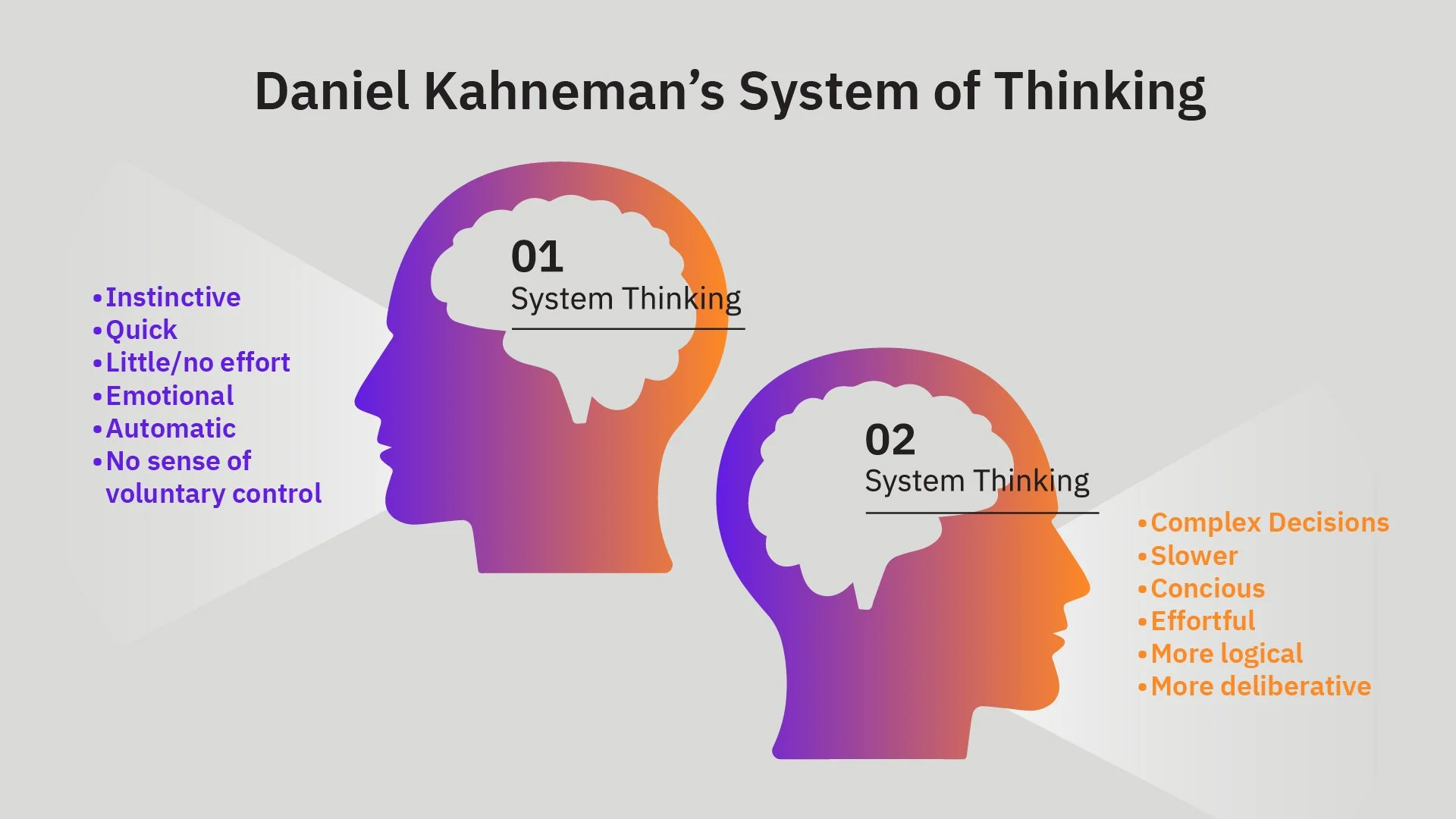The Psychology of Brand Choice
Before marketers can ask the right information at the right time to the right audience, they need to understand how a customer behaves and what underlying beliefs drive his or her behavior. Understanding the core “systems” that drive human decision-making is imperative to influencing how people feel about a product, service or action. While product marketing can and will vary on almost a daily basis, the way our brains function has never changed.
So what are these “systems” that create beliefs and drive decision-making? How do they operate? And most important, how can they be applied to improve marketing success? To help explain, we turned to Daniel Kahneman - a renowned psychologist and Nobel Laureate, whose book Thinking, Fast and Slow describes a two-part system, which works both independently and collectively to drive the way we think[1]; one automatic and quick, the other logical and effortful.
System 1 operates in a quick and automatic manner, using little to no effort, sense of logic or voluntary control. Constantly active, even while we sleep, System 1 is based on our natural instincts and innate skills. It’s the same impulse we share with animals.
System 2 is quite the opposite, and acts in a logical and effortful approach. It is responsible for conscious thoughts that result from an orderly sequence of steps. System 2 takes its time to evaluate a situation and provides the most rational response.
Although both systems have individual functions and limitations, they work together to achieve a position of homeostasis. As Kahneman explains, System 1 continuously provides suggestions for System 2 to act upon, such as first impressions, instincts or gut reactions. When System 2 “approves” of System 1’s insights, those first impressions convert to beliefs, and instincts become actions. One can begin to see how the two systems work together to arrive at a conclusion or make a decision.[2]
The same teamwork is activated when System 1 hits a roadblock. If it’s struggling to commit to an instantaneous reaction, it calls on System 2 to provide a more detailed and well thought out decision pathway. Yet the majority of the time, all goes well and System 2 adopts the suggestions of System 1 with little to no modification.[3]
Right brain/left brain distinctions aren’t new. What is new, as Richard Shotton points out, is that the majority of decisions are made by System 1 – i.e. rapidly and without much logic. Even though we might believe we’re making a conscious decision, the mind is merely post-rationalizing decisions that have already been made.[4]
So what does all this mean for marketers? Dr. Paul Mardsen draws three implications from Kahneman’s work. [5]
Associative coherence drives choice. Simply put, prior memories lead to positive associations through the System 1 or the fast thinking part of the mind, making your product or brand seem like the intuitive choice.
Memories matter more than experiences. As Kahneman explains, people have two “selves” – experience self (the self who experiences things) and remembered self (the self who remembers those experiences.) In order for a user to have a “positive experience,” we may want to consider focusing on the anticipated memory (rather than a specific experience) a brand or product should create.
Target fast thinking. Nowadays, most marketing (especially in healthcare and financial services, two of the most basic of human needs) prompts customers to use their System 2 – i.e. slow thinking – forcing them to process the messages and evaluate if the proposition is relevant to them. This takes time and energy, and often the viewer may just move on. Clicking a website or reacting to a message should aim to be more of an intuitive choice than a logical one. Appealing to the fast, intuitive System 1 will help maintain attention and interest.
In the end, marketing is so much more than positioning a product against an insight or an unmet need: It’s about employing the basics of Developmental Psychology 101. For your next campaign, try employing three new planning strategies:
Understand the automatic, intuitive thinking in order to unleash the ‘uncontrolled’ side of our customers.
Target audiences through a different perspective by using the fast automatic system to get to their real beliefs (dynamic beliefs).
Guide the customer through a battery of positive associations that inspire them to live an extraordinary memory effortlessly.
It was Peter Drucker who said that “the aim of marketing is to know and understand customers so well that the product or service fits them and sells itself.” Perhaps it was he who also recommended that when a product is appropriately positioned around an inherent customer belief, the job of the marketer is to get out of the way and let the brand do the work.
Footnotes
[1] Kahneman, Daniel. Thinking, Fast and Slow. N.p.: Farrar, Straus and Giroux, 2013. Print.
[2] Kahneman, Daniel. "Of 2 Minds: How Fast and Slow Thinking Shape Perception and Choice [Excerpt]." Scientific American, 15 June 2012. Web. 28 Oct. 2015.
[3] Ibid
[4] Shotton, Richard. "Fast and Slow Lessons for Marketers." The Guardian, 7 Apr. 2014. Web. 28 Oct. 2015.
[5] Marsden, Paul, Phd. "Thinking Fast and Slow – Three Marketing Opportunities." Digital Intelligence Today, 19 Mar. 2014. Web. 28 Oct. 2015.

